We live outside of Asheville, NC so when Hurricane Helene hit North Carolina, we were definitely in the middle of the hardest hit areas of the storm.
I have been sharing the need for emergency preparedness for years now. I’m so thankful that we have prepped and have emergency supplies on hand because they definitely helped during this disaster.
These are the things that I’m so glad we had to help us get through a 12-day power outage, 3-week internet outage and be comfortable in the middle of a disaster.
If you’re wondering if we had everything we needed, the answer is nope! Be sure to also see my list of 25 Lessons We Learned in Hurricane Helene to see what we’ll be adding to our emergency stash.
If you would prefer to listen to this list, see my YouTube video to watch or to listen as a podcast.
1. Cash
You need a decent amount of cash, about $200 to $1,000, in small bills.
After the power went out, grocery stores and gas stations, as well as other retailers, could only do cash transactions because there was no internet to do point of sale (POS) transactions with credit cards or debit cards.
2. A Week of Potable Water
We had plenty of bottled water, gallons of water and water-filtration devices for disaster situations (we have Lifestraws and a large capacity gravity-fed water purifier, but Sawyer is also great.)
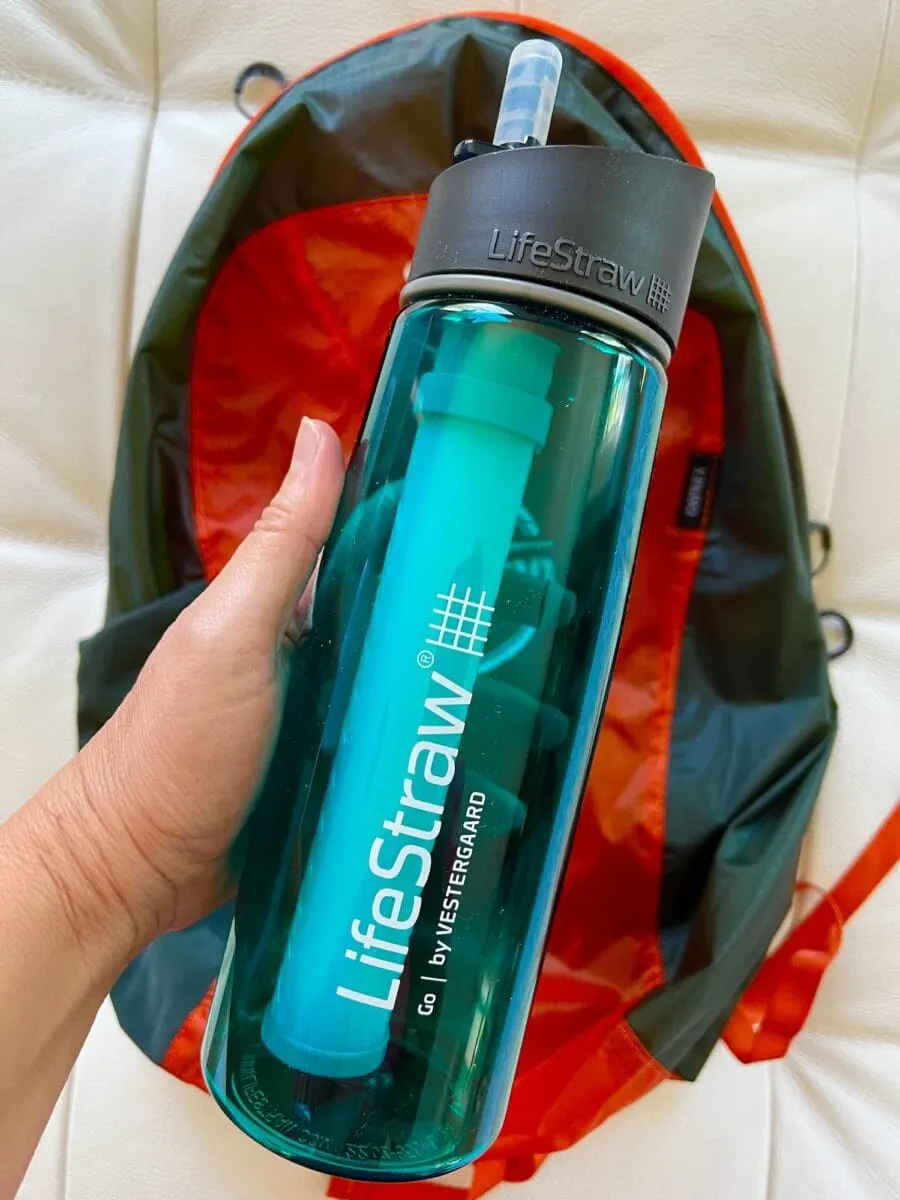
For many people, the only reason they had to leave their house was to go find water when the water system was shut down the day after the hurricane.
3. Plenty of Food
We never once worried about what we were going to eat during the hurricane and the weeks afterwards.
Not needing to go to the grocery store and stand in the long lines outside was a game changer.
Add in the fact that grocery stores had no fresh produce, frozen foods, dairy or meat in the week or so after the hurricane AFTER power came back on. They were all waiting on shipments of food to arrive because they had to throw out anything perishable.
4. Portable Power Station
I have not been shy in saying you need a portable power station, preferably a solar-panel charged battery pack, for emergencies. ANY emergencies.
We have a 1,000 watt Jackery with solar panels to recharge. The Jackery was charged up with a power cord before the storm came through. After the power went out, we were able to fully charge the power unit with solar panels each day, or by plugging into our generator.
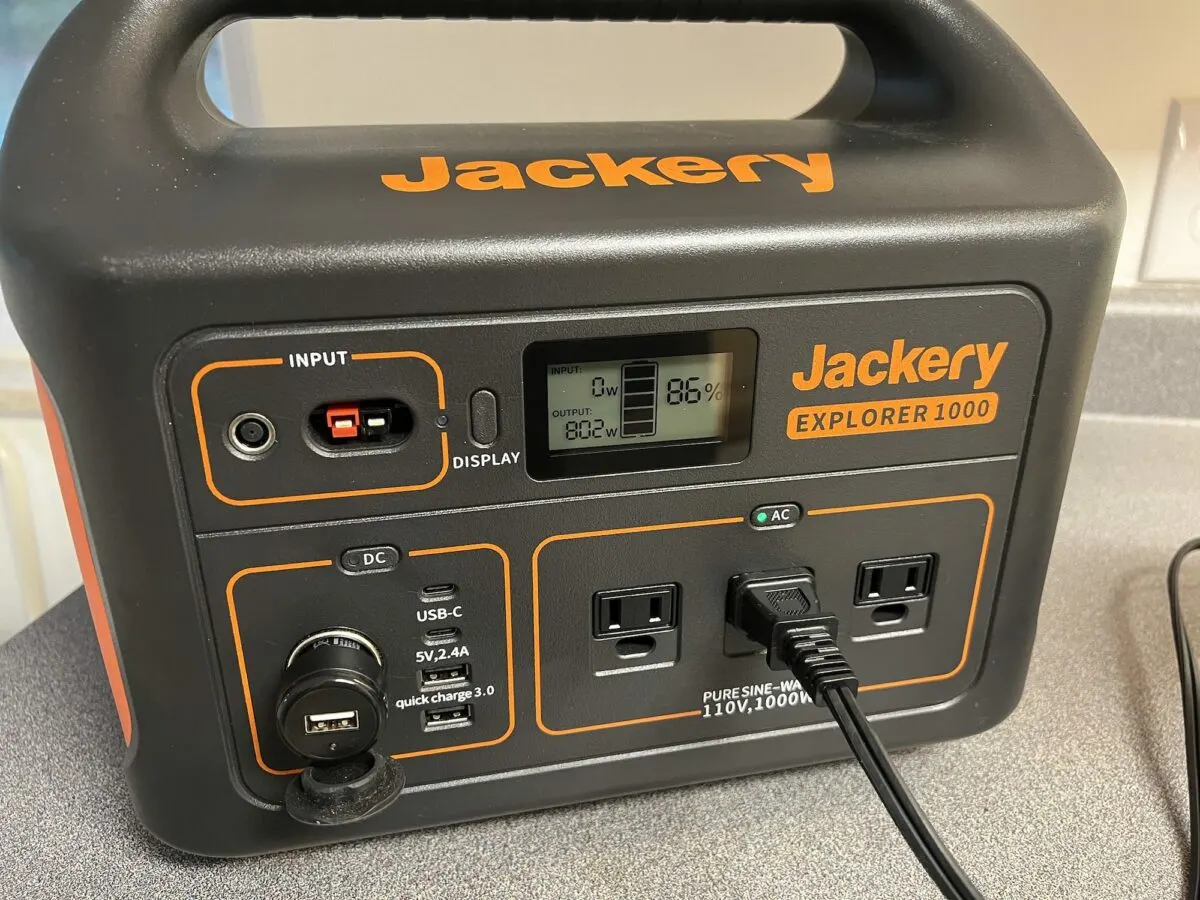
Portable power banks are essentials for so many reasons:
- No exhaust or fumes so can be used indoors
- Silent
- No cranking or pulling to start it
- Lightweight so older adults and those with mobility issues can use them
- Can be moved throughout the house
- Variety of price points, from $250 to $5,000 or more
- Larger models qualify for federal tax credits for capacity of 3 kw hours or more

5. Battery Operated Fans
We learned the wisdom of having battery operated fans when living through three hurricanes in one month in Florida. The power was constantly out and the heat and humidity was unbearable.
These fans are easy to use. They do go through batteries pretty quickly (lasts about 1-2 days depending on frequency of use), but it’s worth it to feel cool.
6. USB / Rechargeable Fans
I cannot say how thankful we are to have USB fans that can be charged and run off a battery. These were GAME CHANGERS while camping and RVing for years.
They also work in emergency situations just as well.
It takes VERY little energy to run these USB fans. Try to find ones that can be charged via a USB cable, which means you can run them on a battery bank or a portable power station like a Jackery.
Bonus points for getting a fan that can be charged and doesn’t have to be hooked up to run.
These are the fans we have and I literally can’t recommend them enough. They were amazing for camping and they are amazing for power outages.
I had a fan plugged into our Jackery overnight to cool the room. I think it only used 1% of the battery power overnight from our 1,000 watt Jackery.
7. Rain Boots
A must-have for walking through flooded basements. Also important if you need to go outside in the middle of the storm or afterwards before the waters have receded.
I bought mine at a thrift store. So glad I did!
8. Arranging the Refrigerator and Freezer
When we had power before the storm, I spent time arranging the refrigerator and freezer.
I made sure that foods that we were likely to eat in a power outage were stored together and in the front, for easy convenience and to reduce the amount of time the doors would have to be open.
This also gave me time to figure out what we had on hand and make some potential meal plans if we lost power.
You do NOT want to be standing in front of an open refrigerator and freezer when the power is out trying to determine what you have and what to cook.
9. Packing the Refrigerator and Freezer
I tried to add as much mass as possible to both the fridge and the freezer so that they would stay cold as long as possible.
Large pockets of air and empty spaces get warmer faster, which means that your food will get warmer faster.
I added bottles and zip-top bags full of water, as well as ice packs, in each.
10. Headlamps
I bought a 5-pack of headlamps when I saw them on a good deal on Amazon never expecting to actually use them.
They turned out to be one of the most-used items for the entire power outage!
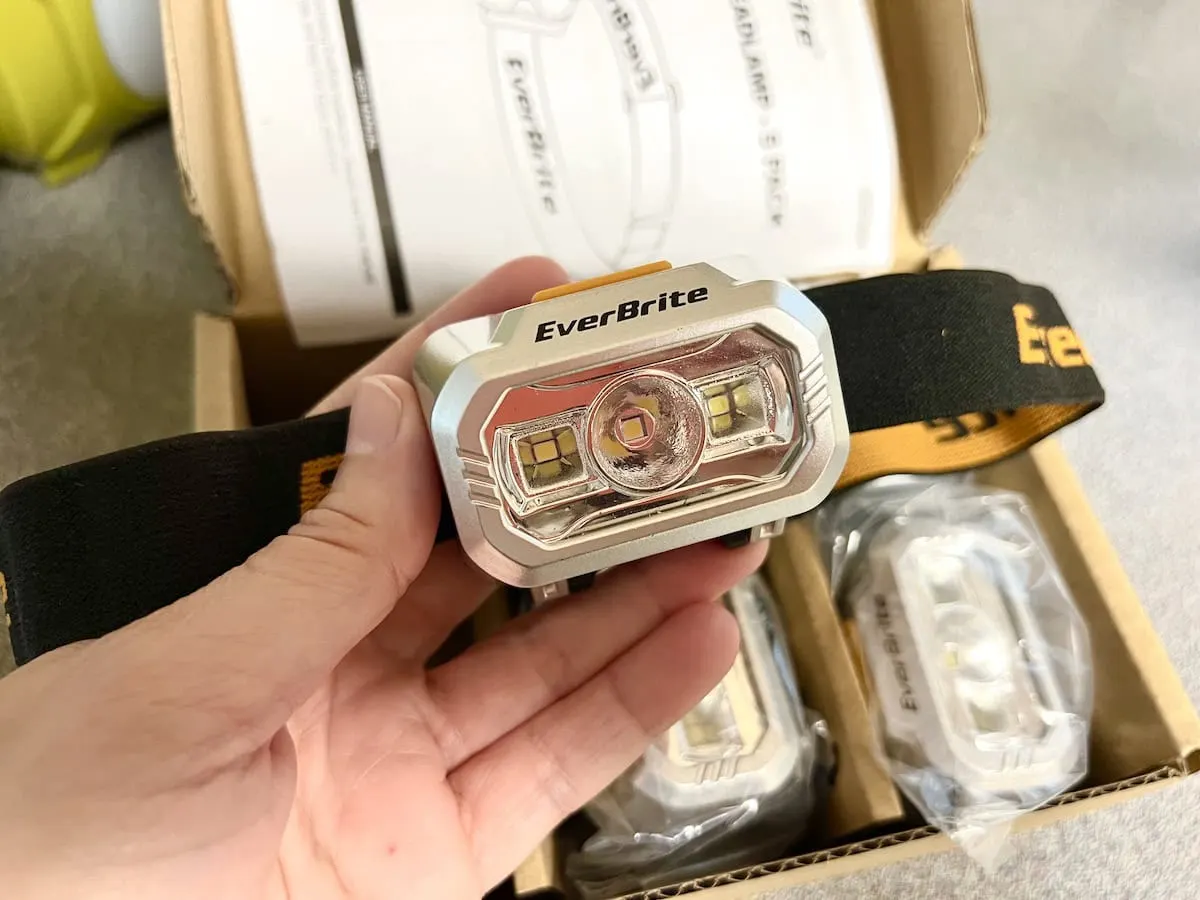
Rather than put it on my head, I put a headlamp on around my neck, like a necklace. This made it very easy to see where I was walking without having to hold a flashlight.
When we were working in the dark basement with no lights, but needing to pick up boxes and move them, the headlamps worked great!
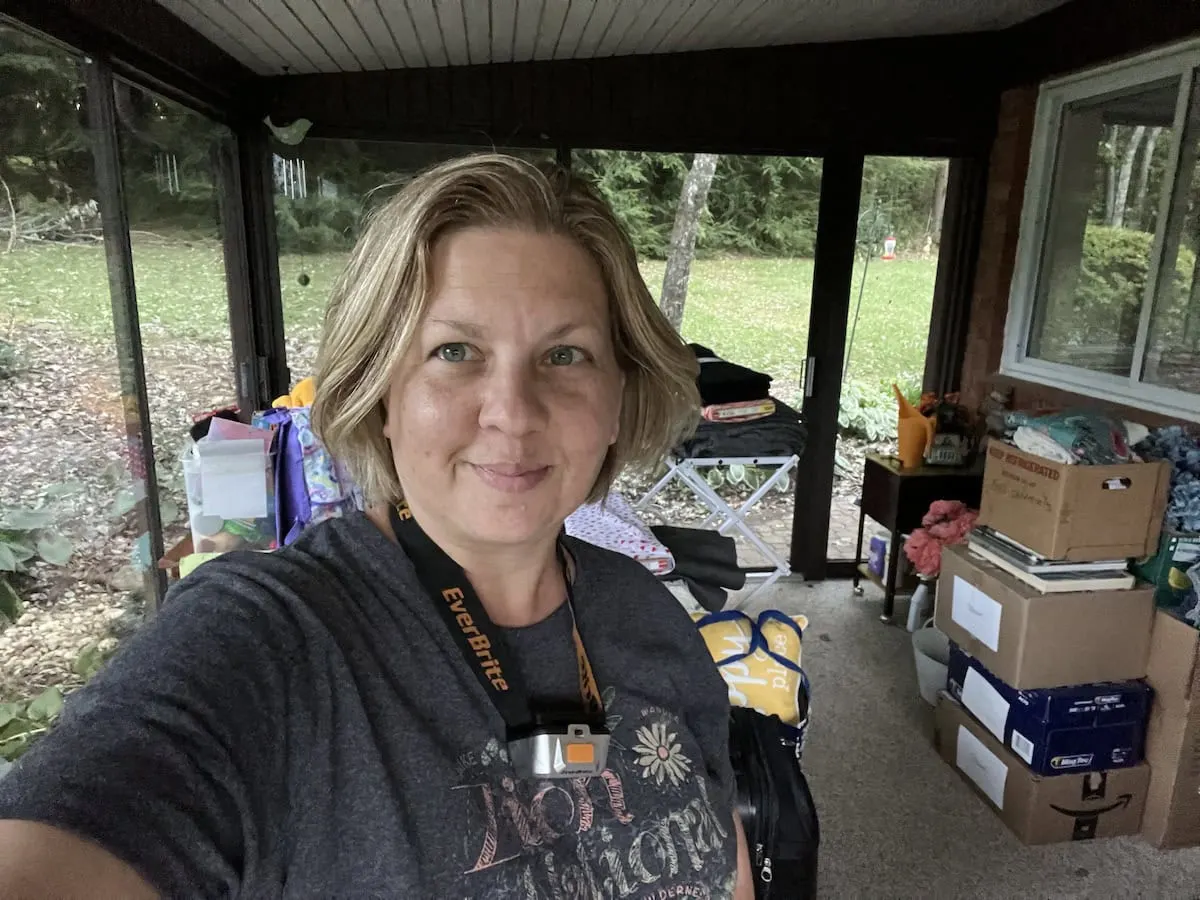
11. Generator
You need a powerful generator to keep a refrigerator and freezer cold, as well as other electrical needs.
Don’t wait until a storm or power outage to get one. This is something you want on hand so you can start using it the moment the power goes out.
12. Water in Jars and Bottles
I’ve been keeping glass soup jars and spaghetti jars and washing them after we use the food. These make excellent short-term storage containers that cost nothing.
I filled multiple jars with water before the storm. This water was potable, but we could also use it for flushing toilets, brushing teeth, washing hands, etc.
For non-potable (can’t drink it) water, you could also fill empty detergent containers, 2-liter bottles, etc.
13. Chocolate Chips
I had a mason jar filled with chocolate chips to have on hand in case of emergencies. I am SO happy I did!
This was one of my top 10 preps!
Comfort foods, especially candy, are so important for morale. Some people are stress eaters, and some people can’t go long without chocolate. If you are one of those people, make sure you have a stash tucked away!
Another important point is that chocolate candies are not donated during disaster relief because they can melt so easily.
I had about 2 bags of chocolate chips in a quart-size mason jar. I did not use an oxygen absorber. They had been stored for about 2 years (in a cool, dark place) and they tasted fine!
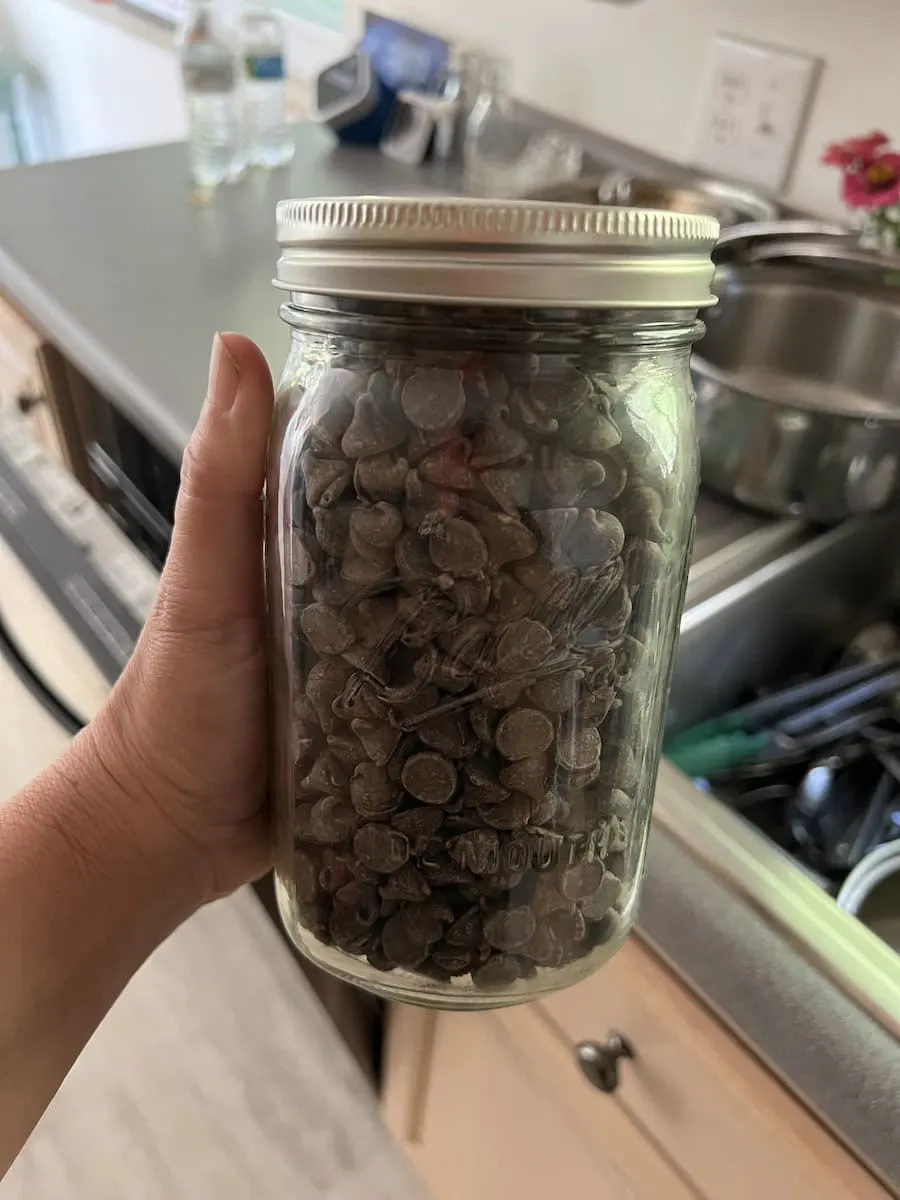
14. Prepared Foods
Canned soups and canned spaghetti was quick and easy to make for meals. Especially when you have to use propane or another fuel source which may be limited.
15. Meat Frozen
After the storm it was several days before fresh meat was available in the supermarkets.
16. Insulated Water Bottles
I put ice-cold water in our HydroFlasks and Yeti bottles the night before the storm. The insulated bottles kept the water cold for more than a day afterwards.
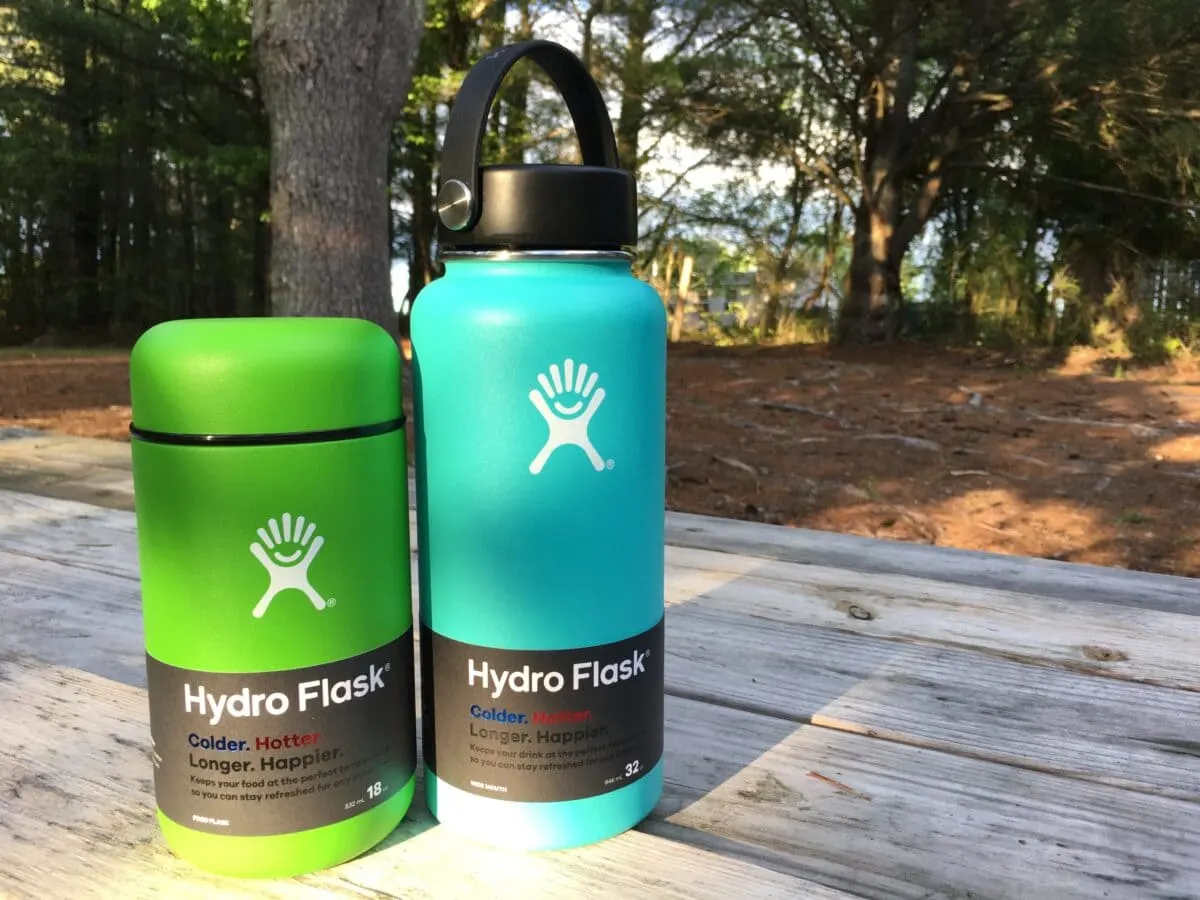
Ice cold water is a morale booster in a power outage!
Alternatively, I could have put in hot soup or hot coffee or tea and it would have stayed warm for about 24 hours.
17. Getting Gas Beforehand
My husband went out the day before the storm – in the pouring down rain we were experiencing already – and filled up the tanks and cans with gas. He said no one was out.
The day after the storm there were lines 4-5 hours long to get gas.
Go when no one else is thinking about it. Will save you a lot of frustration!
18. Got Gas in Middle of Night
When fuel supplies were low and gas shortages meant 5 hour long lines at the gas stations, there was no way we wanted to be in the middle of that.
But we still needed to get gas about a week after the power went out.
Going in the middle of the night at 3 a.m. was the easiest way. There were no lines, no traffic and plenty of fuel.
19. Having Gas Cans
Be sure to have gas cans before a storm, even if they are empty. These are among the first things to sell out once the power goes out.
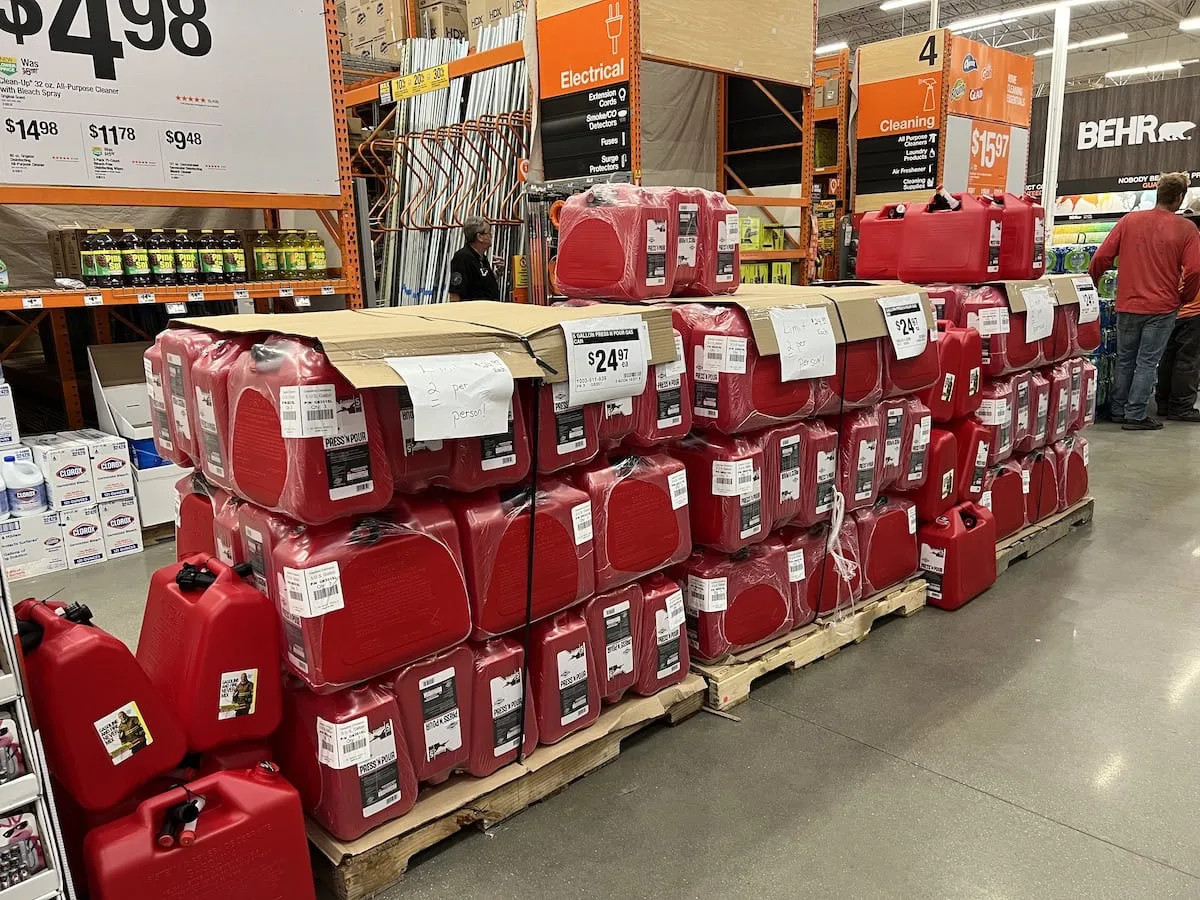
20. Generator Oil
If you have a generator to use in a power outage, be sure to have the appropriate type of oil on hand, too.
21. Important Papers
We had insurance papers and bank information readily available, which made filing claims and filling out paperwork easier.
It is SO important to have digital copies of important paperwork. That is why it is one of my top things to pack in my bug out bag if I had to evacuate with little notice.
22. Solar Powered and USB-Charged Lighting
You need lots of lights in a power outage. From lights that can illuminate a room to portable lighting that can be used while walking through the house.
We prefer flashlights that are can be recharged with solar panels or a USB cord (or both).
Batteries are easy to have on hand, but they won’t last indefinitely. They also make the flashlight really heavy.
This is the LED lantern that we used. I am so happy with it. The lantern still had a charge when we opened the box up (after being stored for a year or so without use). It easily illuminated a room, which was essential for working in a dark basement with no power.
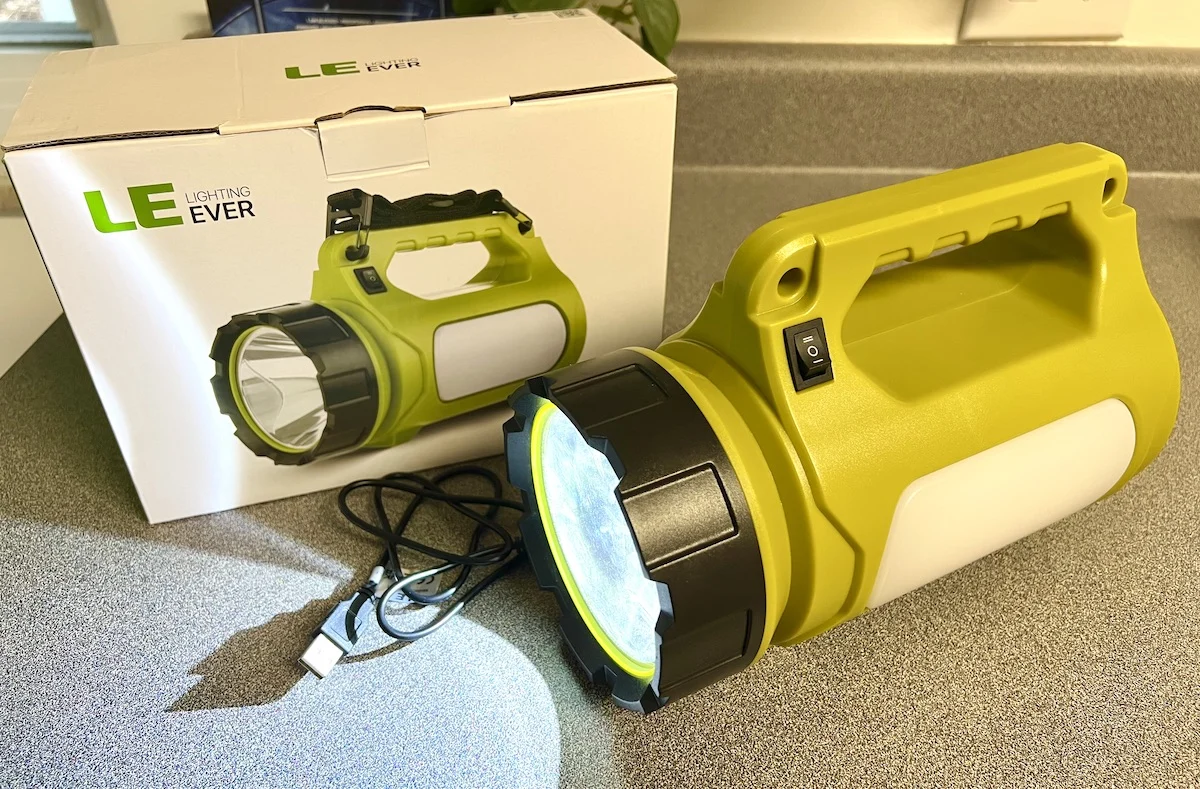
It is super lightweight and quickly charges. Plus it holds a charge for quite a while. And there are a variety of ways to use the lights, and it comes with a shoulder strap.
23. Camp Stove and Propane
One of the easiest and most portable options for cooking food is a camp stove and small propane bottles.
Have one in your emergency supplies and learn how to use it before a disaster comes.
24. Work Gloves, Utility Knives, Tools on Hand
We were able to instantly get started removing carpeting and drywall because we had the tools on hand.
If we had to wait until the roads were clear in order to get supplies, there would have been more damage to our home with mold and moisture.
Basic hand tools and supplies, such as high quality work gloves (thick canvas gloves, not nitrile coated gloves), hammer, pliers, screwdriver, utility knives and blades, etc. lets you get to work ASAP.
Even if you don’t need them, your neighbors might need the help.
25. Moisture Meter
While not necessary for every disaster, a moisture meter really helps after a hurricane.
This is not something we would normally have on hand, either, but my husband just bought one for his work.
A moisture meter was invaluable to tell us how wet the drywall was after we had cleared out the water and wet carpeting from our lower living level. Knowing the moisture levels let us know how much drywall we needed to cut to prevent mold.
Helpful Tip: We cut four feet from the floor because dry wall panels come in 4-foot sections and it is easier to patch that way. If we only had a few inches of water damaged dry wall, we wouldn’t have cut so much out. However, the moisture meter was showing over limit levels for several feet up the wall.
26. Called Mold Remediation Immediately
Within 3 hours of our lower living level flooding, I called a moisture and mold remediation company to get on their list for when they were able to start servicing the area.
We ended up doing the work ourselves because it would have taken too long to wait on someone and the moisture damage would have kept getting worse while waiting.
27. Having Box Fans
We didn’t need to wait on stores to open to buy fans to dry out the basement. We had a few box fans already and were able to plug them into the generator to start drying out the walls, drywall and items.
28. Mold Killer
We already had a gallon of this botanical mold killer that works great. This is something not sold in stores and needs to be ordered online.
If we needed this mold killer and had to wait on delivery services, it would have been 3-4 weeks before we got it. WAY too long when you need to start killing mold.
Home improvement stores will have chemical-based mold killers, but you’ve got to wait for them to open and then EVERYONE wants to buy mold killer after a hurricane or flood or other storm with water-damage.
29. Gallons of Vinegar
Vinegar is a great tool to use for cleaning and disinfecting. Surprisingly, it’s also one of the first things to be bought up after a storm.
Have a few gallons on hand. Sam’s Club is where I’ve found the best price.
30. Body Wipes
With no power for hot showers, we used body wipes to clean our hands and bodies. We went through two packs quickly, so we were glad to have had several packs on hand.
Dude Wipes are among our favorites because they are unscented and suitable for everyone.
31. Immediately Contacted Family
Power, water and internet services were not stable or reliable. Just because we had internet one day didn’t mean we would have it the next day.
One of the best things we did was contacted family as soon as we could. The morning of the hurricane our internet service was surprisingly good, so it was nice to have contact with family to make sure they were okay.
After that, communications became worse so I’m thankful we didn’t wait.
32. Sound Machine with White Noise
The sound of generators running all night long or in the middle of the day can drive you crazy.
Plus, it’s a constant reminder you are in an emergency situation.
A great sound machine with white noise that runs off of USB or electric power is nice to have. This is the one we use and I can’t recommend it enough. It draws very little power (about 1% or less from our Jackery.)
33. Propane Bottles
Keep big containers, small containers and every type of propane that you can stored for emergency use.
34. Cast Iron Pan
We bought one cast iron pan to have for emergencies in case needing to cook on an open flame. While we don’t usually use it (I really don’t like cooking with cast iron), it’s good to know we had the option.
This one is around $10 and a good investment to have just in case.
35. Electrolytes and Mineral Salt
With the stress, sweating and eating different types of foods, your body will need more minerals and vitamins.
We were surprised when we got an emergency food box for hurricane relief from our county and found a box of electrolytes inside. It was a great idea to include in the boxes, but there were only two packs. And not everyone would have received them.
I’m glad we had Redmond’s mineral salt in the panty. We used lots of salt on the foods we were cooking to replenish minerals.
We also had electrolyte drops which can be added to any liquid, including soup. A bottle lasts a lot longer than packets.
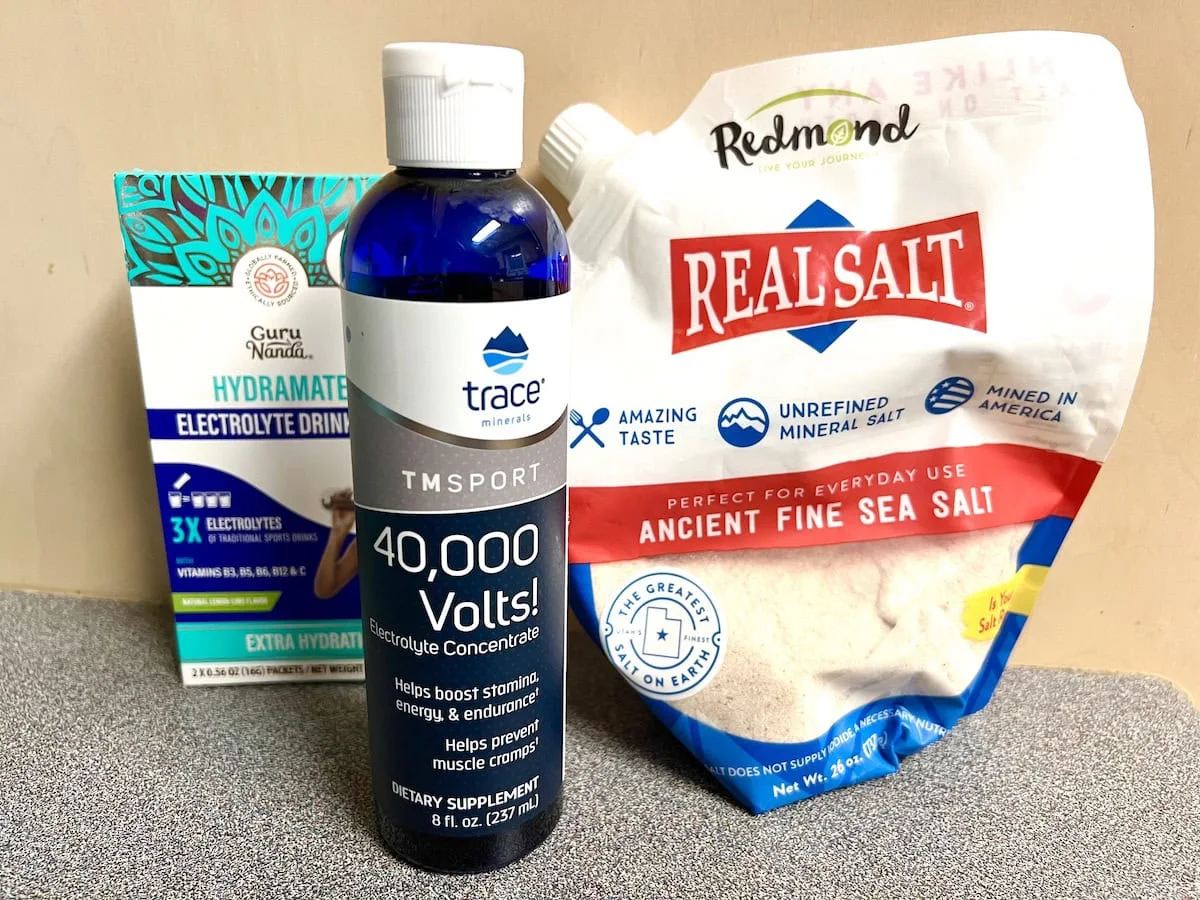
36. Recognizing Shock and Feeling Emotions
It ain’t easy going through a natural disaster. Even if you didn’t have property damage.
Everything around you suddenly changes, your community, your routine, your work, school, roads that are available, businesses still open……
It’s exhausting. And it’s scary. And it’s stress-inducing.
Recognizing that you are in shock is an important tool. Also allowing the multitude of emotions to come to the surface and give each one of them time to be expressed.
Gratefulness. Thankfulness. Fear. Shock. Anxiety. Sadness.
I cried. A lot. I also laughed. A lot. And hugged everyone I could and smiled with others. It’s okay to feel all of the emotions in a matter of minutes.
Don’t try to make sense of it or suppress feelings. You can’t logically think your way out of this emotional mess.
37. Not Comparing Grief
In the hours, days and weeks after the storm hit, so many people would say “Be happy, at least you didn’t lose your home or loved ones.”
While you want to put things in perspective, it’s okay to feel grief even if you weren’t among the hardest affected.
We let ourselves complain. Then 30-seconds later we reminded ourselves for everything that we are thankful and grateful for.
Let out the emotions. You don’t need to dwell on them. But you do need to get them out.
38. Medications and First-Aid Supplies
In the days after a disaster, it’s going to be hard to find pharmacies that are available to refill prescriptions. While a disaster declaration (at least in NC) means that you can take your prescription to any pharmacy and they can give you an emergency supply of that medication without transferring your prescription, you still have to hope that you can find one open and they have what you need.
Having a supply of medications and first aid supplies was crucial to peace of mind.
For instance, my husband burned his hand on the cast-iron pan as he was making dinner. We had never used cast iron before and didn’t realize the handle got so hot.
I was able to get the burn-spray I had in my first aid kit to minimize discomfort. There was no option for driving to a store to find supplies.
39. Accepting Assistance
I was hesitant to go to the places offering free hot meals after the disaster because we had enough food to eat and didn’t want to take away from others than might have needed it more.
When I finally had enough of cold foods for over a week, though, I went to a Mercy Chefs location and had a great taco meal with chocolate cake!
Not only was it filling, but it also made me feel better emotionally. It brought me out of the disaster zone and into a realm of comfort and normalcy.
40. Gave Food and Water to Neighbors
If you are blessed, help someone else out.
41. Live in a Place with a Great Community
We are so thankful to have moved into a neighborhood and community that helps others. There was never one moment where we didn’t think we could get assistance if we needed it.
42. Have an Old Freezer
Our older refrigerator/freezer combo that came with our house kept foods cold the longest, compared to the newer models with side by side doors and fancy amenities.
43. Books with Information
We have a library of books full of information needed if the internet is not available.
Be sure to get these types of books:
- Basic cookbooks
- Home Improvement
- Gardening
- First Aid and Medical Care
We have been buying these used at library bookstores, thrift shops, etc.
44. Analog Games and Entertainment
Boredom was a problem for many people, especially those with kids. Schools were closed for three weeks after the storm, and two of those weeks had no power. Trying to keep kids entertained that long was difficult for parents.
We didn’t get bored because we were taking care of a flooded basement.
It’s smart to have analog entertainment, though, such as:
- Puzzles
- Word Games
- Crossword Puzzles
- Cards
- Books to Read
- Watercolor Painting
- Scrapbooking
- Paint by Number Kits
- Bracelet Making Kits
45. Disinfectant Wipes
You just can’t imagine how dirty and gross things get without power for a few days.
While disinfectant wipes and solution were readily available at disaster relief sites, those items are made with lots of chemicals. I prefer the more natural brands and am glad we had the wipes at home.
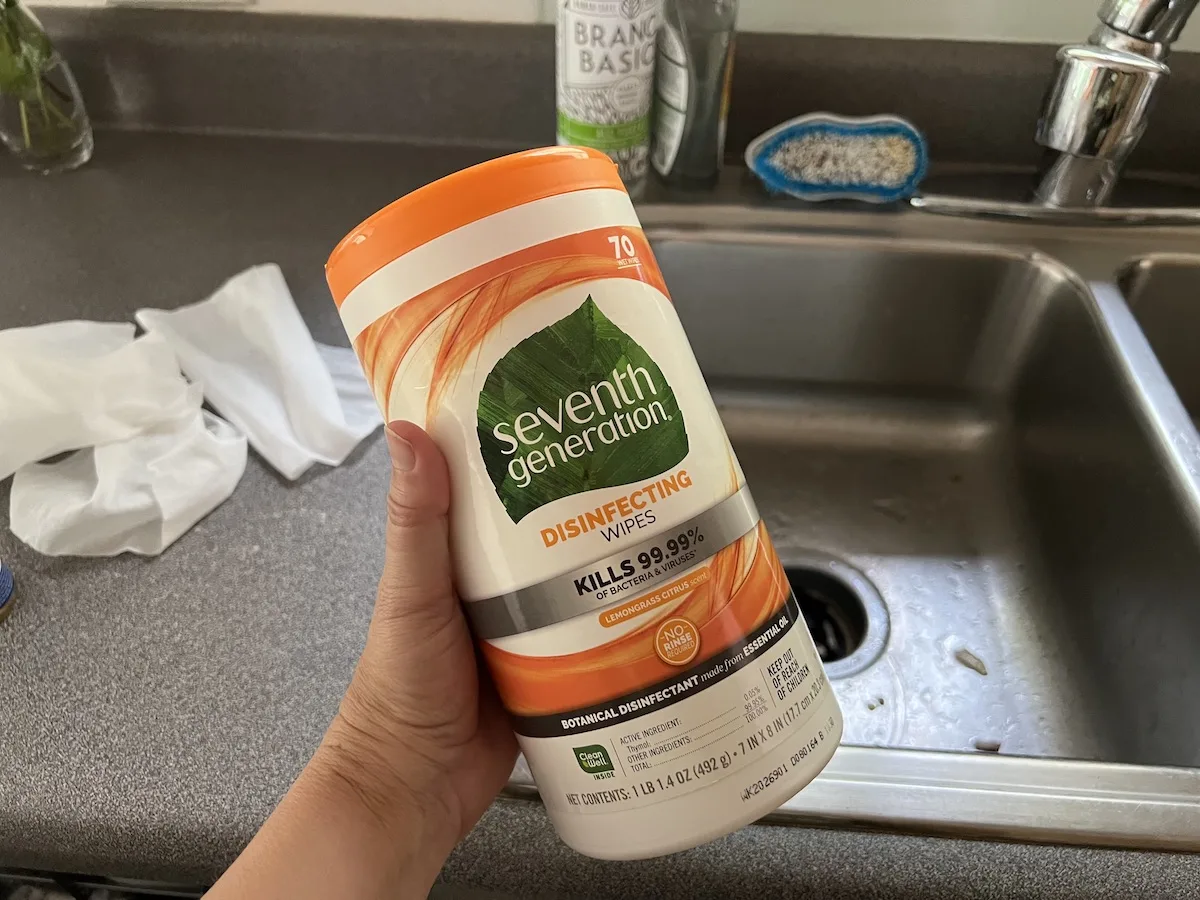
This was especially important cleaning up in the kitchen, and wiping down the sink and toilets during the power outage.
46. Portable Oven
This is different than a portable campstove. This is an actual portable oven.
We first got a portable oven for camping and loved it for off-grid living.
This is the portable oven we have used for years. Not all ovens are the same and many don’t heat as well, so I really suggest you get the Roadpro or a similar version.
In a power outage, the portable oven has been a game changer. We can power it with our Jackery to cook food.
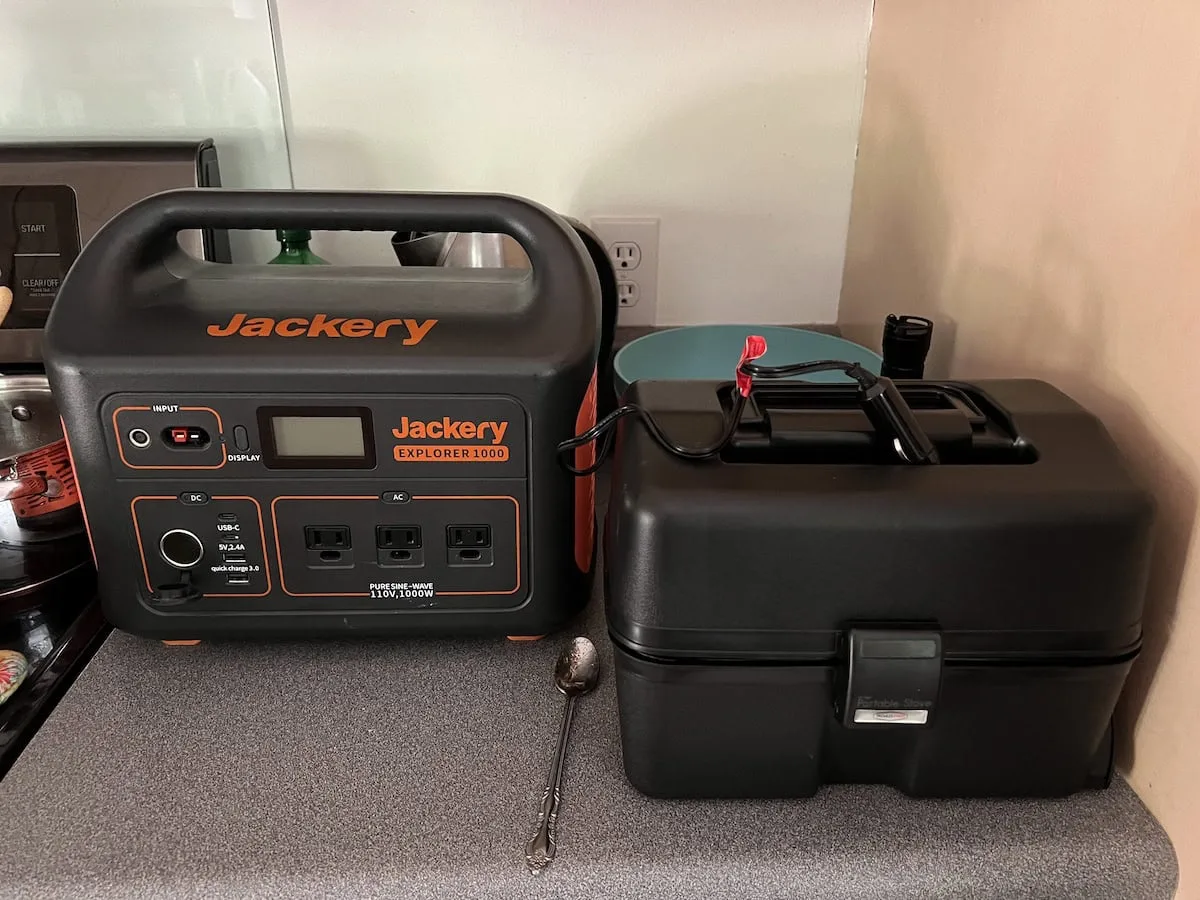
While you can’t choose a specific temperature, such as 350 degrees, this is an oven that heats and cooks food using 12V power.
We have been so happy with this oven for many years. I have made hot dogs, reheated foods, cooked hot sandwiches and even made a baked peach dessert in the power outage!
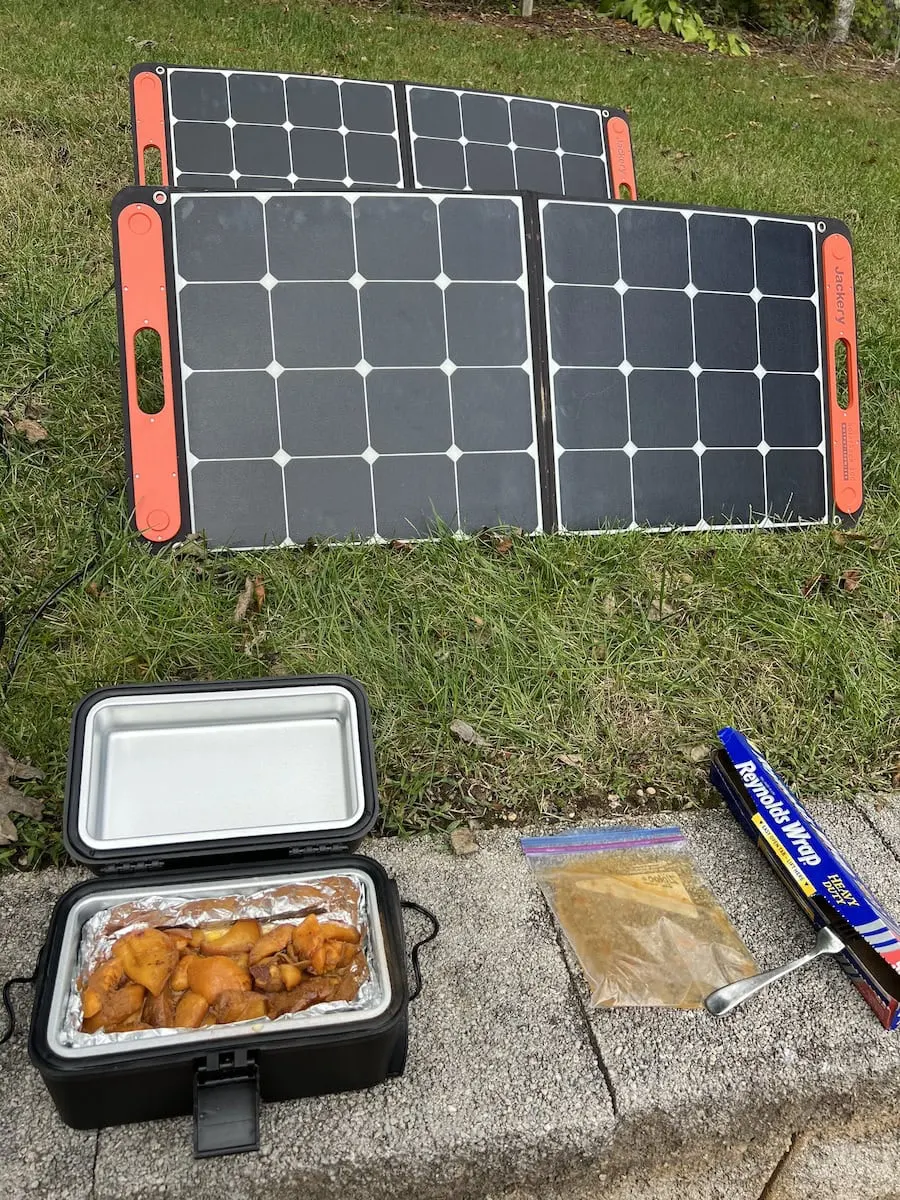
47. Asking for Prepping Supplies for Christmas Presents
A lot of prepping supplies can be expensive, and you may not want to spend the money on them.
One of the best things I’ve done is to ask for one or two emergency preparedness supplies on my Christmas list each year, along with fun things.
Over time we have added to our supplies. The LED lantern and cast iron pan were things that were Christmas gifts. So glad we had them!
48. Electric Burners
Even though I wasn’t able to find my electric burners in the middle of this disaster, I’m so thankful we had them on hand to help with cooking indoors.
While cooking on a grill or campstove is the go-to way to heat food without power, it has to be outside.
These electric stovetops can be used indoors with a portable power station and use little electricity.
49. Applied to FEMA
We applied for FEMA assistance as soon as we could. You’ll be in the queue line faster for home inspections and assistance, while others will wait for weeks and months. Apply as soon as you can.
50. Have Faith
It’s easy to get overwhelmed with everything and ask “Why?” Knowing that God is in control, no matter what is happening, is the ultimate way to get rid of fear and know you are going to be okay.
You may want to see my big list of Stocking Stuffers for Preppers for great items to add to your preparedness stash.

